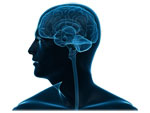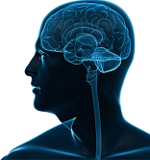Concussion as a Medical Diagnosis
Different symptom patterns of concussion depend on the precise nature of the damage to the brain
 Medical research is increasingly identifying the various ways a concussion can impact the brain and is providing explanations for why different symptoms persist in a subset of people diagnosed with concussion, based on the anatomy and physiology of the brain.
Medical research is increasingly identifying the various ways a concussion can impact the brain and is providing explanations for why different symptoms persist in a subset of people diagnosed with concussion, based on the anatomy and physiology of the brain.
Much of this recent research has benefited from new techniques to “image” the brain, including various MRI techniques such as “diffusion tensor imaging” (“DTI”). In a prior post, I discussed research concerning the subset of concussed patients who experience persistent ocular (vision) and vestibular (balance) problems. A paper published online on April 15, 2014 in the journal Radiology reported that DTI imaging of patients with these symptoms revealed damage in the parts of the brain know to be associated with vision and balance.
Dr. Alhilali, the lead author, noted that one of the implications of the study is that
“Concussion is not just one pathology, but many different injuries with different symptoms. Not every case is the same, and we need to treat each patient individually.”
On the same theme, a study published by Yeager et al in March 2014 in the American Journal of Radiology found that post-concussion patients with persistent sleep-wake disturbances are far more likely to have brain anatomy that makes the pineal gland –which produces melatonin – more likely to be impinged when the brain is subjected to the acceleration/deceleration forces involved with a concussion.
A group of researchers from Buffalo led by Dr. John Leddy have focused on a substantial subset of concussion patients who manifest metabolic and physiological changes in organ systems outside the brain. A common manifestation is higher heart rates at rest and after cognitive and physiological stress. The Buffalo team relies on research showing that concussion can disturb the autonomic nervous system, causing greater sympathetic nervous activity and lower parasympathetic activity, compared to controls.
Concussion can also disturb “autoregulation,” the maintenance of cerebral flow at appropriate levels during changes in systemic blood pressure.
“This may explain,” Dr. Leddy’s team reports, “why symptoms often reappear or worsen with physical and/or mental exertion. “
Dr. Leddy’s team tests patients by subjecting them to a “provocative exercise” test they call the “Buffalo Concussion Treadmill Test.” In addition to higher heart rates than would be expected, patients with ongoing symptoms commonly experience a painful tightness in the head when subjected to this exertion. This test is recommended as a tool to determine exercise tolerance levels, permitting gradual return to function in most patients.
Dr. Leddy’s team reaches the same conclusion – that concussion is better viewed as a medical problem than as a neuropsychological problem and that the symptoms usually have a medical explanation. This perspective increases the potential for medical solutions, good news for victims of persistent concussion symptoms.

